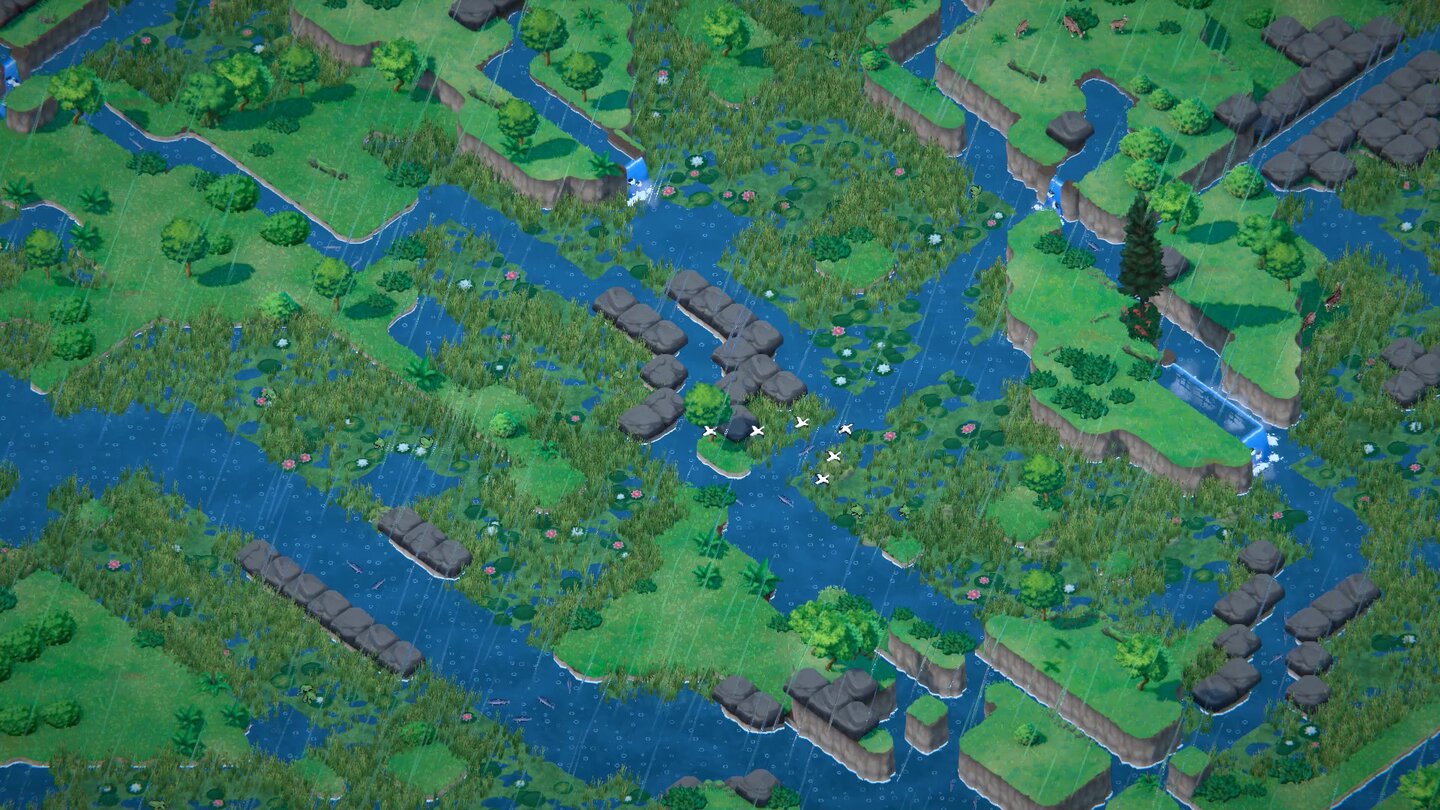
These random aspects of Terra Nil don't always pay off as welcome variety. But, like a good game of solitaire, unpredictability and adapting to what chance provides is part of the fun, although your toolbox is robust enough to make failure a distant concern with a little practice. The randomly generated maps provide their own challenges, with the placement of a natural lake or river often defining your strategy. It also makes it an entertaining game to return to, although I do worry a bit about diminishing returns. You're kickstarting natural processes, not building a base, and perhaps learning a bit about how these environments formed in the first place. A controlled wildfire can create fertile ground for an entire forest. A well-placed water pump on a hill can fill multiple rivers and lakes. Just completing each mission became relatively easy (although I could have pushed things harder with the granular difficulty settings, limiting resources and making choices more important), but finding the tricks in each environment to nudge nature into doing the heavy lifting was always satisfying. That's where the joy of Terra Nil lay for me. A few carefully placed Cloud Seeders near bodies of water won't do much at first, but the rising humidity will kickstart natural rains again, cleansing the entire map if you're willing to just sit for a while and let nature take its course while enjoying the rainy ASMR vibes. While you could brute force your way to success and cover the entire map with a grid of scrubbers and irrigators, it's far more efficient just to give nature a little nudge in the right direction. Systems are introduced through a beautifully illustrated notebook encouraging you to focus on the beauty of the natural world. Terra Nil is impressively good at conveying its message through mechanics. Lastly, each mission asks you to scan the environments you've created to find ideal homes for an assortment of animals, and then use natural rivers or your own monorail systems to clean up, leaving nothing but a lush environment filled with wildlife that you're encouraged to sit back and appreciate for a while as the camera pans triumphantly over it. It's different, but again it activates the same kind of skills/parts of the brain that Terra Nil does, and is pretty peaceful.With enough green and blue foundation laid, a new set of structures unlocks (a different set in each mission and variant), allowing you to further manipulate the environment and grow different kinds of habitat to fill a quota for each.
Games like terra nil generator#
You build a network of turret trees, resource generator trees, and other types of tree as you expand out from your home tree, and either defend or reclaim the map. There is a little bit of "build X to support Y" mechanic at play, but it's a continuous back-and-forth with new blocks affecting old ones' production, and with many resources to track rather than a single "currency." That said, it can definitely scratch the same kind of itch that Terra Nil can, as it also has that puzzle/building game hybrid going onĪnother game, although a little out of left field, is Naneulu - it's actually a tower defence game, but with a twist. Terra Nil's major difference to Islanders is that as the terrain types change you can build different things on them Islanders has static terrain although you can build "plateaus" to build on top of which does allow a tiny bit of terraforming/planning in advance to allow building something where it previously couldn't.īlock'Hood is similar in theme and aesthetics, although the gameplay is only passingly similar. chase a set score to unlock the next tier/pack of things to build


buildings "count" when they're placed, they don't change after that proximity of buildings determines which ones affect each other, thereby deciding score It's a puzzle/citybuilding hybrid with very similar rules: Islanders is the closest thing I've played to Terra Nil, and has a lot of similar mechanics.


 0 kommentar(er)
0 kommentar(er)
